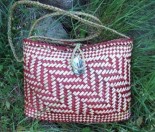Family food gatherings may be a time for giving, but there’s one thing you don’t want to give your family or your guests – and that’s food poisoning.
Anyone whose suffered a bout of food poisoning will tell you it’s something they wouldn’t wish on their worst enemy. That’s why food safety is so important.
What is food poisoning?
Food poisoning occurs when we eat food that is contaminated with harmful bacteria or viruses. The main culprits are Campylobacter, Cryptosporidium, Giardia and Salmonella. Less frequent infections are caused by Shigella, Hepatitis A, Listeria (particularly dangerous to pregnant women), Yersinia and E.coli.
The festive season is a time of high risk for food poisoning and there are several reasons for this.
We often buy larger quantities of food, pushing our refrigerators to their limits. The cold air cannot circulate as easily in an over-stocked fridge. If we cannot store food safely then the risk of contamination, from a range of food-borne bacteria, increases.
Maintaining the fridge temperature within the recommended 1ºC to 5ºC helps prevent bacterial growth that can cause food poisoning, and allows perishable foods to be stored and eaten safely over two or three days. Most pathogenic bacteria (those that cause food poisoning) cannot grow at the recommended refrigeration temperatures.
It is possible to buy a cheap fridge thermometer to see what your fridge temperature actually is; they are available from hardware stores. Finding out what temperature your fridge is running at can be critical if you have an old fridge and perhaps the seals are not as good as they should be. Why not ask Santa to add a fridge thermometer to your Christmas stocking!
Given the right conditions, bacteria will grow rapidly in food. They love a warm, moist environment. The high risk foods include meat (especially chicken); fish, and shellfish; stocks and sauces; milk and cream and foods made from these products; eggs and egg dishes; and cooked cereals such as rice.
Food safety
There are four things that we must consider when handling any food:
Clean, Cook, Cover, Chill – the 4Cs of Food Hygiene
Clean
- Make sure your hands are clean before you do any food preparation.
This does not mean a quick flick under running water, it means a good scrub with soapy water. - Did you know the ideal length of time to wash your hands is around the same length of time it takes to sing “happy birthday” twice?
- Don’t forget to thoroughly dry your hands as well – on a clean hand towel (not the tea towel).
- It is also important to make sure your utensils are clean. Chopping boards need to be scrubbed under hot water in between preparing raw and cooked foods; better still a separate board and utensils should be used for raw and cooked food.
- Keep dish cloths clean – soak them in bleach or put them on a rack in the dishwasher on a regular basis.
Cook
- Chicken, mince-based foods and sausages need to be cooked thoroughly.
- After cooking they should not still be pink – any juices from the chicken should be clear.
- If using these meats on the BBQ you should pre-cook them first in the microwave or pre-boil the sausages.
- Do not put the cooked meat back on the plate that had the raw food on it as this leads to cross contamination with bacteria from the raw meat.
- If you are starting off with frozen meat then allow time for this to thaw. Meat should be defrosted in the fridge before cooking and it should not be left sitting on the bench all day to thaw in our summer heat. This means that if you have a frozen turkey you need to take it out of the freezer before Christmas Eve – allow 24 hours for each 2-2.5 kg of weight.
- If you are re-heating leftovers then make sure they are steaming hot all the way through. It is just as important that the meat is thoroughly defrosted before cooking.
- Always test the temperature in the thickest part or the middle part of the item being cooked as you need to make sure it is hot and well cooked all the way through.
Cover
- Foods stored in the fridge should be covered.
- Always make sure that raw and cooked foods are stored separately in the fridge.
- Raw foods should be stored at the bottom of the fridge so that any juices that leak out cannot drip down to cooked foods. Cover food while not in use to protect it from insects, especially flies.
Chill
- Bacteria thrives at room temperature.
- Food needs to be kept well chilled or very hot.
- See the comments below on how to safely store your left overs.
- Consider packing a chilly bin in the back of the car for transporting high risk foods home from the supermarket.
- If you are taking food to a picnic or barbecue, keep it cold by transporting and storing it in a chilly bin.
- If you are camping, ensure you have some way of keeping food cool.
Left-over food
At this time of the year we can have a lot more left-over food, and it is important to use these wisely and carefully.
If you have left-over food to store there are some important steps to follow
- Allow the food to cool before you put it in the fridge. If it goes into the fridge when it is hot it will heat the whole fridge. To help speed up the cooling process you may need to put it in a shallow dish so the heat can escape more quickly.
- Do not leave it on the bench to cool for longer than 30 minutes, keep it loosely covered while cooling on the bench to stop flies from landing on it but so the heat can still escape.
- Leftovers should always be covered before they go in the fridge.
- Always place leftovers above any raw foods so that drips from any raw food can not contaminate the cooked food.
- Left-over food should not be stored for longer than 2-3 days.
- When re-heating it is important to re-heat them quickly, it is very important that the centre of the food, or the thickest part of the item, is heated to a hot temperature. Do not just check the surface temperature. Foods should be re-heated to a temperature of 75-83ºC.
- It is also important to keep your fridge clean and to wipe up any spills straight away.
- To decrease the amount of left-over food you need to store think carefully about the quantities you need to buy or prepare.
Remember the golden rule:
If in doubt – throw it out!
It is important to note that food that is contaminated with bacteria will not necessarily taste, look or smell any different to a non-contaminated food, so if in doubt, throw it out. Remember too, that if you are ill with symptoms such as vomiting and/or diarrhoea you should not prepare food for others as this can help to spread infection to others and some of these bugs are extremely contagious.
No one wants food poisoning – so take care and stay safe!
Useful Websites
Food Safety in the Home : www.nzfsa.govt.nz/publications/food-safety-in-the-home/
The New Zealand Foodsafe Partnership website is administered by the New Zealand Food Safety Authority which provides a concise overview of keeping safe with food.






